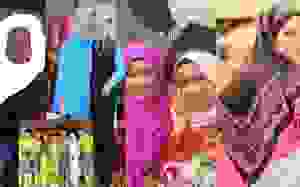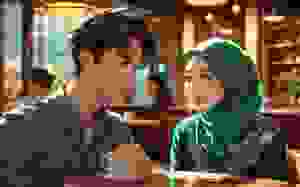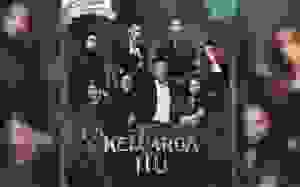Rmk13 S Vision Meets The Streets Of Bukit Bintang Delivering Dignity Through Action

THE launch of the 13th Malaysia Plan (RMK13) by Prime Minister Datuk Seri Anwar Ibrahim recently marked a significant milestone in our national development journey.
With its strong emphasis on equitable growth, resilience and social wellbeing, RMK13 charts a bold path forward, not just for rural communities and industrial zones, but also for high-density urban centres like Bukit Bintang where I have been active in community work over the past decade.
RMK13 sets out to uplift the quality and dignity of life for all Malaysians, promising to lift the baseline and the quality of life for the people and to build a decent standard of living.
As a local community activist, I view this plan as an important opportunity to bring lasting improvements to those often overlooked in the shadows of city skylines.
Everyday concerns in the city
In Bukit Bintang, the concerns are familiar: affordable housing, accessible healthcare, quality education and the rising cost of living.
While RMK13 allocates RM40 bil for health and RM67 bil for education, the key question is how to ensure that every ringgit reaches the people who need it most.
For example, public clinic congestion remains a challenge, especially for senior citizens. Families with school-going children often feel compelled to spend on tuition just to keep up. And even basic expenses—from groceries to childcare—have steadily crept up for those living in high-cost districts.
Under RMK13 the commitment towards an inclusive and responsive development is crystal clear. What matters now is making sure the delivery mechanisms match the lived realities of people in the city.
Making the unseen visible
One area where we must continue improving is how we identify those most in need. In the city, poverty and hardship do not always look like they do in rural districts.
In places like Besut or Bagan Serai, RM100 can be stretched much farther than in Bukit Bintang, which lies at the heart of Malaysia’s capital.
Beneath the neon lights of Bukit Bintang, poverty persists in ways not often obvious. Around the Central Market, Medan Pasar, and even near the Jalan Sultan Ismail-Jalan Bukit Bintang junction, homeless individuals can be found sleeping on the streets.
Single mothers are also found in pockets of the city where lower-income families reside, such as the Hang Tuah Public Housing flats and the Salak South People’s Housing Project (PPR).

(Image: Pexels/Khairi Harry)As for the hardcore poor, while the numbers are relatively low in Bukit Bintang, even a single household is one too many.
Some are found in the Blue Boy Mansion and Selangor Mansion, whose names may evoke grandeur but in reality house many low-income residents.
RMK13 rightly reminds us that GDP growth means little if people’s freedoms and dignity are still shackled by hunger, injustice or exclusion. As someone who lives and serves in Bukit Bintang, I see that reality every day.
Walking the talk in Bukit Bintang
While RMK13 outlines a national framework, real impact comes from local leadership stepping up to meet immediate needs. For years, my team and I have been actively serving on the ground in Bukit Bintang to safeguard the welfare of our community.
For example, through the Jualan Rahmah initiative led by the Domestic Trade and Costs of Living Ministry (KPDN), we work closely to bring affordable grocery sales to the heart of the city.
Our role includes identifying suitable sites, assisting with crowd control and registration on the day, and verifying that participants are Malaysian.
In addition, we distributed 99 Speedmart vouchers worth RM100 each to around 2,000 elderly residents and households in need. These help them cope with rising costs and manage their daily expenses.
We also support residents who often fall through the cracks of national assistance schemes such as Sumbangan Tunai Rahmah (STR) and Sumbangan Asas Rahmah (SARA).
Many walk into the Federal Territories Residents’ Representative Council office to check their eligibility or request help with registration.
To make access even easier, we now invite the Welfare Department and the Inland Revenue Board to set up booths during certain community programmes so that residents can check, clarify and register on the spot.
These may not be grand initiatives, but they deliver meaningful help to those who need it. By connecting national policy with local action, we help ensure that no one is left behind.
Looking ahead
RMK13 is not just a document of targets and budgets. It is, in many ways, a moral and social obligation.
It reminds us that, to quote PM’s address when tabling RMK13, “justice is not merely a moral principle but a social instrument that unites society”.
I believe Bukit Bintang reflects both the promise and the challenges of urban Malaysia. It is not perfect, but it is real. The needs here are immediate, and the solutions must be practical and close to the ground.
RMK13 has set the right course. It is our responsibility to ensure that its aspirations translate into everyday improvements for the people—from dwellers of the Jalan Hang Tuah Public Housing flats and traders along Jalan Tuanku Abdul Rahman, to students in Victoria Institution and senior citizens living near the famous Jalan Kenanga.
Even small wins in a place like Bukit Bintang can go a long way in showing how RMK13 can work where it matters most.
Ben Fong Kok Seng is the Chairperson of the Bukit Bintang Parliamentary Zone, Federal Territories Residents’ Representative Council.
The views expressed are solely of the author and do not necessarily reflect those of MMKtT.
- Focus Malaysia.
Artikel ini hanyalah simpanan cache dari url asal penulis yang berkebarangkalian sudah terlalu lama atau sudah dibuang :
http://malaysiansmustknowthetruth.blogspot.com/2025/08/rmk13s-vision-meets-streets-of-bukit.html
 PING BABAB : Raksasa Aggregator Malaysia
PING BABAB : Raksasa Aggregator Malaysia

 (Image: Pexels/Khairi Harry)As for the hardcore poor, while the numbers are relatively low in Bukit Bintang, even a single household is one too many.
(Image: Pexels/Khairi Harry)As for the hardcore poor, while the numbers are relatively low in Bukit Bintang, even a single household is one too many.


























